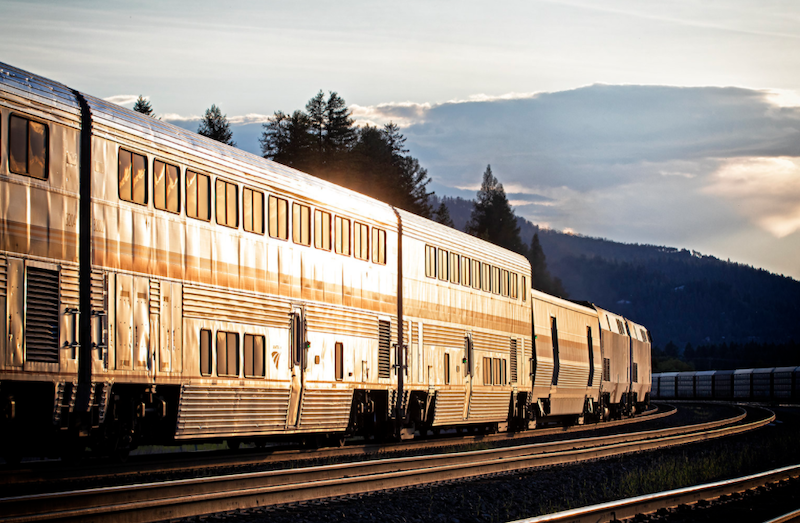By Justin Franz
WASHINGTON — Amtrak officials say that COVID-19 will have to be on the decline and bookings will have to be on the rise before it will restore daily long-distance passenger service in 2021. Amtrak is presently planning on reducing most of its long-distance train services to three days a week starting Oct. 1. On Tuesday, the railroad released a white paper outlining benchmarks that will need to be met to restore service afterwards.
In June, Amtrak told employees that it would be cutting long-distance services due to declining ridership amid the COVID-19 pandemic. Only the Auto Train would continue daily service. The Silver Meteor between New York and Miami will run four days a week so that it can maintain connections with the Silver Star. “This is an appropriate response, given the current and near-term market conditions,” Vice-President and Chief Marketing/Revenue Officer Roger Harris wrote at the time. “During the COVID-19 pandemic, our ridership has been down by as much as 95 percent year-over-year. It’s climbing back slowly – and it is going to take a long time to return to normal.”
At the time, Amtrak officials said their goal was to eventually resume normal service but they offered few details about what that would actually look like — until now.
Amtrak will have three criteria for a long-distance train to return: public health, future demand and current performance. Those criteria in detail are:
Public Health — Is the COVID-19 pandemic under control?
- Amtrak will assess COVID-19-related hospitalization rates in the regions through which a given Long Distance route operates. If those rates are stable or declining as of Feb. 15, 2021, this condition will be met.
Future Demand — Are customers booking trips near the same rate as in 2020?
- Amtrak will compare advance bookings for June 2021 (as of Feb. 15, 2021) to advance bookings for June 2020 (as of Feb. 15, 2020). If the percentage of available seat- and room-miles booked in 2021 is at least 90% of the 2020 percentage, this condition will be met. (Note that calculations of availability for 2021 will reflect any caps on ticket sales to promote social distancing, as well as any other relevant measures adopted to minimize COVID-related risks.)
Current Performance — Is ridership close to our projections in our operating plan?
- Amtrak will compare systemwide ridership levels for the fall (Q1 of FY 2021) with our FY 2021 operating plan, which already accounts for reduced ridership due to COVID. If the number of passengers is at least 90% of the projected figure, this condition will be met.
“If all three conditions are met for a given Long Distance route, then in Feb. 2021, we will begin working to restore service along that route,” officials wrote. “Depending on the particular route, that restoration could be complete as early as late May, and no later than June 30, 2021.”
According to the white paper, long-distance ridership demand dropped 81 percent in May and June 2020. Critics have stated that the plan to reduce service will do more to discourage ridership than save money. However, Amtrak officials have said that it is taking steps to make sure it has minimal impact on riders, including by designing the schedule so that it maintains as many Chicago connections as possible between eastern and western trains. Amtrak has not yet released a schedule of the new tri-weekly service.
Amtrak officials also wrote that they are committed to the long-distance network, noting that it is investing in new station upgrades and new equipment, including 75 new Charger locomotives.
“Before the pandemic, 4.6 million of our 32 million annual passengers traveled on Amtrak’s Long Distance routes,” officials wrote. “COVID-19 has changed a lot, at times causing our total ridership to drop by more than 95% from FY 2019 levels—but Amtrak is still America’s Railroad, and we are still committed to serving our customers and connecting communities across the nation.



